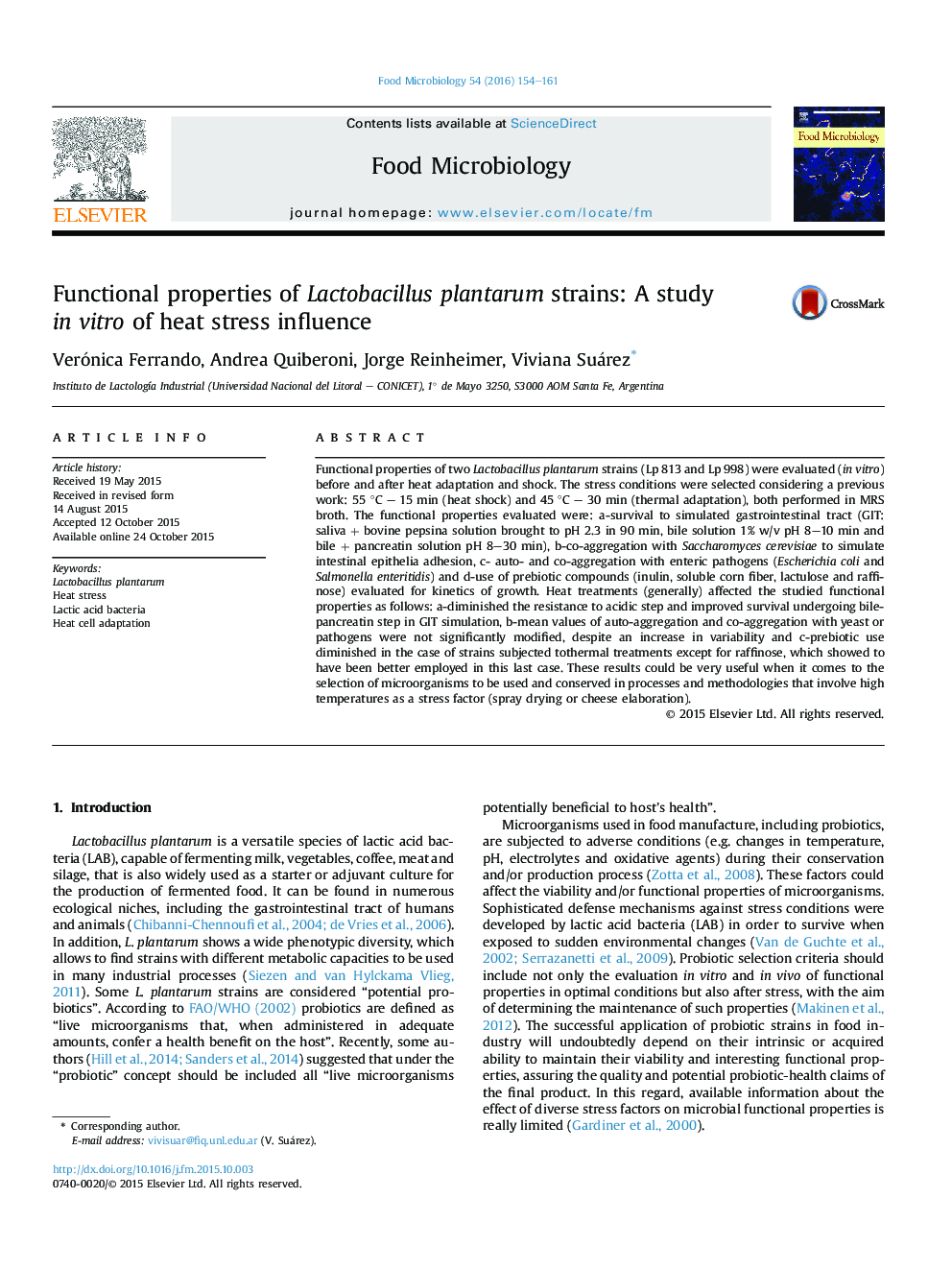| Article ID | Journal | Published Year | Pages | File Type |
|---|---|---|---|---|
| 4362639 | Food Microbiology | 2016 | 8 Pages |
•Heat effect on functional properties of Lactobacillus plantarum strains was studied.•Cell viability diminished in acid step but improved facing the bile-pancreatin (GIT).•Auto-aggregation and co-aggregation values with yeast/pathogens were not modified.•Prebiotic use diminished as exception of raffinose, which was better employed.•The strains could be successfully used in processes involving high temperatures.
Functional properties of two Lactobacillus plantarum strains (Lp 813 and Lp 998) were evaluated (in vitro) before and after heat adaptation and shock. The stress conditions were selected considering a previous work: 55 °C – 15 min (heat shock) and 45 °C – 30 min (thermal adaptation), both performed in MRS broth. The functional properties evaluated were: a-survival to simulated gastrointestinal tract (GIT: saliva + bovine pepsina solution brought to pH 2.3 in 90 min, bile solution 1% w/v pH 8–10 min and bile + pancreatin solution pH 8–30 min), b-co-aggregation with Saccharomyces cerevisiae to simulate intestinal epithelia adhesion, c- auto- and co-aggregation with enteric pathogens (Escherichia coli and Salmonella enteritidis) and d-use of prebiotic compounds (inulin, soluble corn fiber, lactulose and raffinose) evaluated for kinetics of growth. Heat treatments (generally) affected the studied functional properties as follows: a-diminished the resistance to acidic step and improved survival undergoing bile-pancreatin step in GIT simulation, b-mean values of auto-aggregation and co-aggregation with yeast or pathogens were not significantly modified, despite an increase in variability and c-prebiotic use diminished in the case of strains subjected tothermal treatments except for raffinose, which showed to have been better employed in this last case. These results could be very useful when it comes to the selection of microorganisms to be used and conserved in processes and methodologies that involve high temperatures as a stress factor (spray drying or cheese elaboration).
